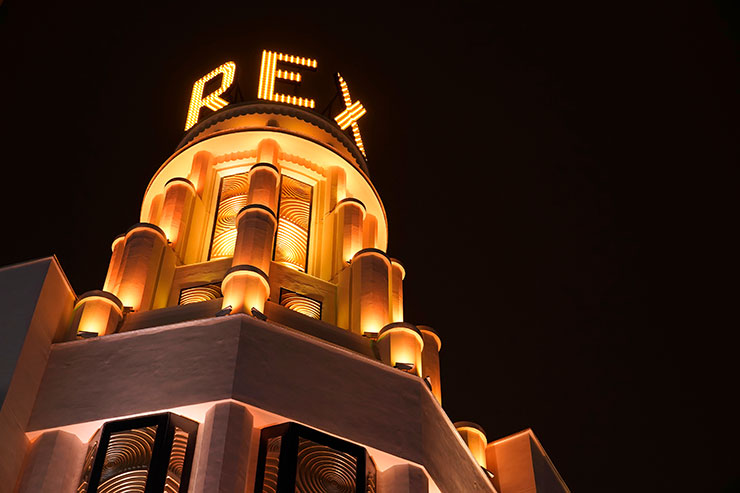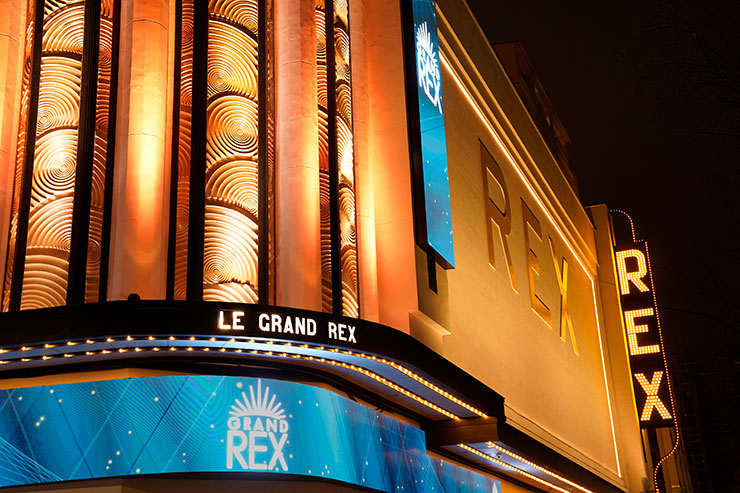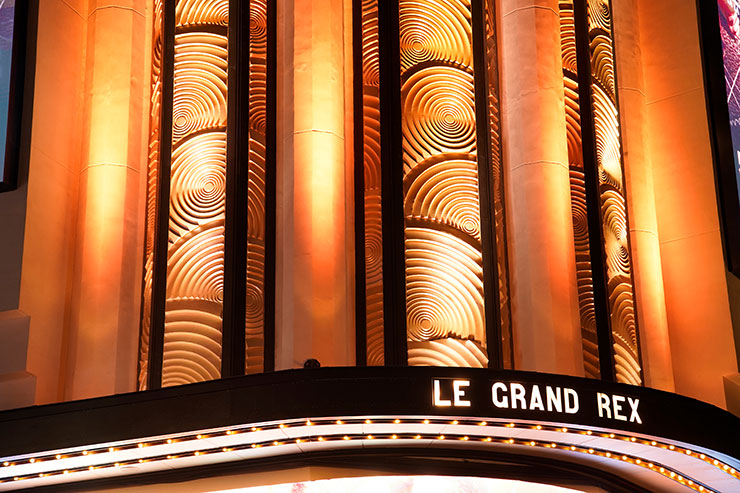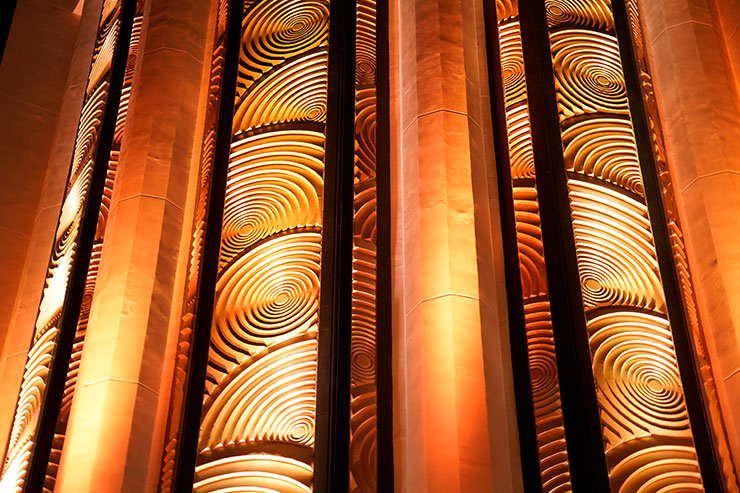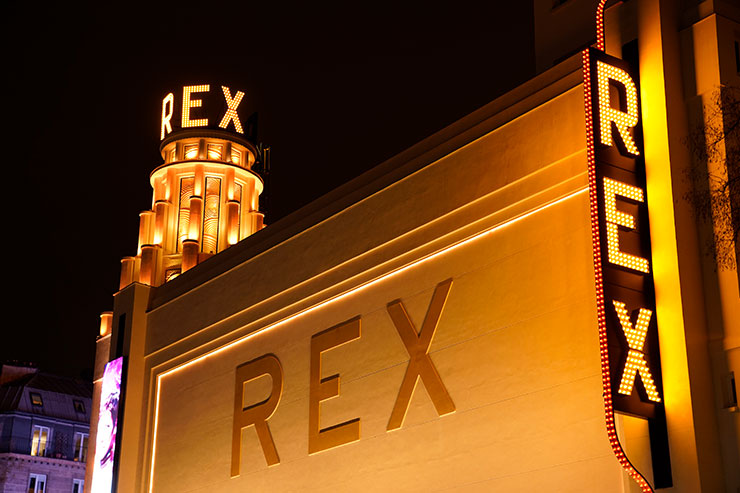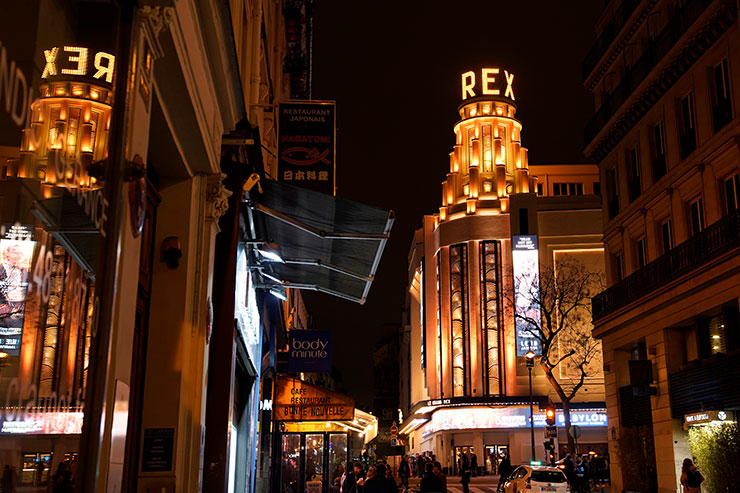- ABOUT
- JUDGING
- CONTACT
- MORE
- 2024 Entries
- Installations 2024
- Past Winners
- Subscribe
- [d]arc directory
- arc magazine
- darc magazine
Le Grand Rex, France
ProjectLe Grand RexLocationParis, FranceLighting DesignStudio Vicarini, FranceArchitectAtelier PNG, FranceAdditional DesignAssociate Architect: Stéphane Thomasson E.T.A.ClientLe Grand RexLighting SuppliersLumenpulse, Gérard Sudron, Actif SignalPhotographyLe Morse
The Grand REX is an unique cinema, one of the highlights of Parisian nights. Built in 1932 in the Art Deco style and listed as a Historic Monument since 1981, it is the composite work of Auguste Bluysen, John Eberson and Maurice Dufrène. On the model of American cinema it is unique by the confrontation of an architecture with modern accents and an atmospheric room that recreates a pseudo-Mediterranean interior atmosphere. In the center of Paris located on the great boulevards between République and Opéra. For 90 years, it has presented, 365 days a year, film releases, avant-premieres of major international productions, legendary concerts and it has a reception room, a museum, and a renowned electro club. The biggest cinema in the world has remained an icon thanks to its owners and a passionate team.
In 2020, the winning architects for the Grand Rex’s renovation facades and roofs, Atelier PNG Architecture is chosen alongside Stéphane Thomasson E.T.A. to conduct it. The Studio Vicarini, light designer, was entrusted with the design and realization project for the exterior facades’ lighting.
How then to materialize a new nocturnal identity, by soberly respecting a building returned to its origin, and the needs of attractivities of such a place in our time, both on the web and in the city?
As part of this major work, the owners wanted to provide the cinema with original and unprecedented lighting.
For several years the Studio Vicarini has been working on sea fronts where he had the opportunity to observe meticulously headlight optics. It is by seeing the bas-reliefs of the tables very closely, that the evidence of a restitution of the Fresnel optics was made for these panels. For Charles Vicarini, it was a celebration of the French Optic, reinterpreted in a ceremonial setting wishing to stage the urban lighthouse that is this cinema.
On the strength of this discovery we concentrated on these tables of opaque plaster covered with gold which should, in the original illuminated design of the interior, reveal the transparency of the glass rafters which the building should have adorned.
The special attention paid to the «Fresnel» lantern, typical of cinema lighting fixtures, whose bas-relief pattern is completely restored on the staff tables, required special attention.
For the staging of the tables we combined a general light rather diffuse has an ultra intensive light. This supernatural light combining relief and brilliance, the perfect concealment of sources, gives the illusion of light coming from within.
To accompany this structuring gesture and irradiate the renovated facade the lighting follows the volumetry of the surfaces and lines. The lights are built in a mounted room and follow this building. But the lighting and its degraded modulations celebrate the slender volumes mounted on each other in a magnetic luminous crescendo, accentuating the monumentality and radiance of the facade. It is certain that the architecture and the reliefs form a whole that it is impossible to dissociate.
This illumination is also a social act. This tower soaring towards the sky, under the raw light of the day, is also a beacon in the night. It is this central dimension, a historical landmark of Paris during the night for festival or entertainments that is materialized here. And our greatest satisfaction is to see that the onlookers do not seem to get tired of taking pictures, the REX is offered to the city and to the world. A present for passers-by, a wonder offered to all audiences.
A facade for the night where the light is outside and the night inside, unlike the private palaces before.
Keeping in mind that these bright signs are part of the history of the inscribed building. They are not incidental. The Drac and the architect of the Bâtiments de France have followed us since the beginning. Our first thought as a light designer regarding the need to be frugal and respectful of the night sky, is of course that it will consume electricity. We use dimmable LED lamps, which are set very low between 5 and 10%, and which consume much less than previous lighting. The whole lighting has a wired, programmed, and reprogrammable system, which allows to change the light, the color of the light, its power, its temporalities intelligently, even on a phone. Every evening at 23:00 it goes out, signs and facades included in summer and winter.
As soon as night falls, the lighting is declined as much in a festive way during events, in the idea of the show, as in a more monumental way to return to the historic building, all its superb, also at night. The light has a great ability to adapt to the needs of the place and participates, by the modulation of colors, to the uniqueness for certain events. It is versatile, reversible and shows as many facets of the Grand Rex.
Different lighting scenarios depending on the events. July 14, the building is adorned with blue, white and red lights, or to mark the previews of successful films such as Avatar with an all-blue lighting, or the movie Barbie with its pink color became emblematic.
We pay great attention to the integration of the devices as well as their ease of maintenance. Adjustments were made directly on site. Some were carried out «blindly» on the scaffolding, while others, on the lantern in particular, required the help of mountaineers.
We integrate different light elements into the study:
– Both facades: rue and boulevard Poissonnière
– The lantern (bow) that will be updated
– Fresnel tables in staff
– The Marquise
– Flag sign
– The summit sign
– Basement with entrance doors and visual transition to lobby. This transition between the hall and the street will be particularly neat to offer a fertile and welcoming, warm threshold.
The light, with its advanced technicality, infuses a legacy image inscribed in a resolutely contemporary dynamic. A heritage approach and openness towards the 21st century.
